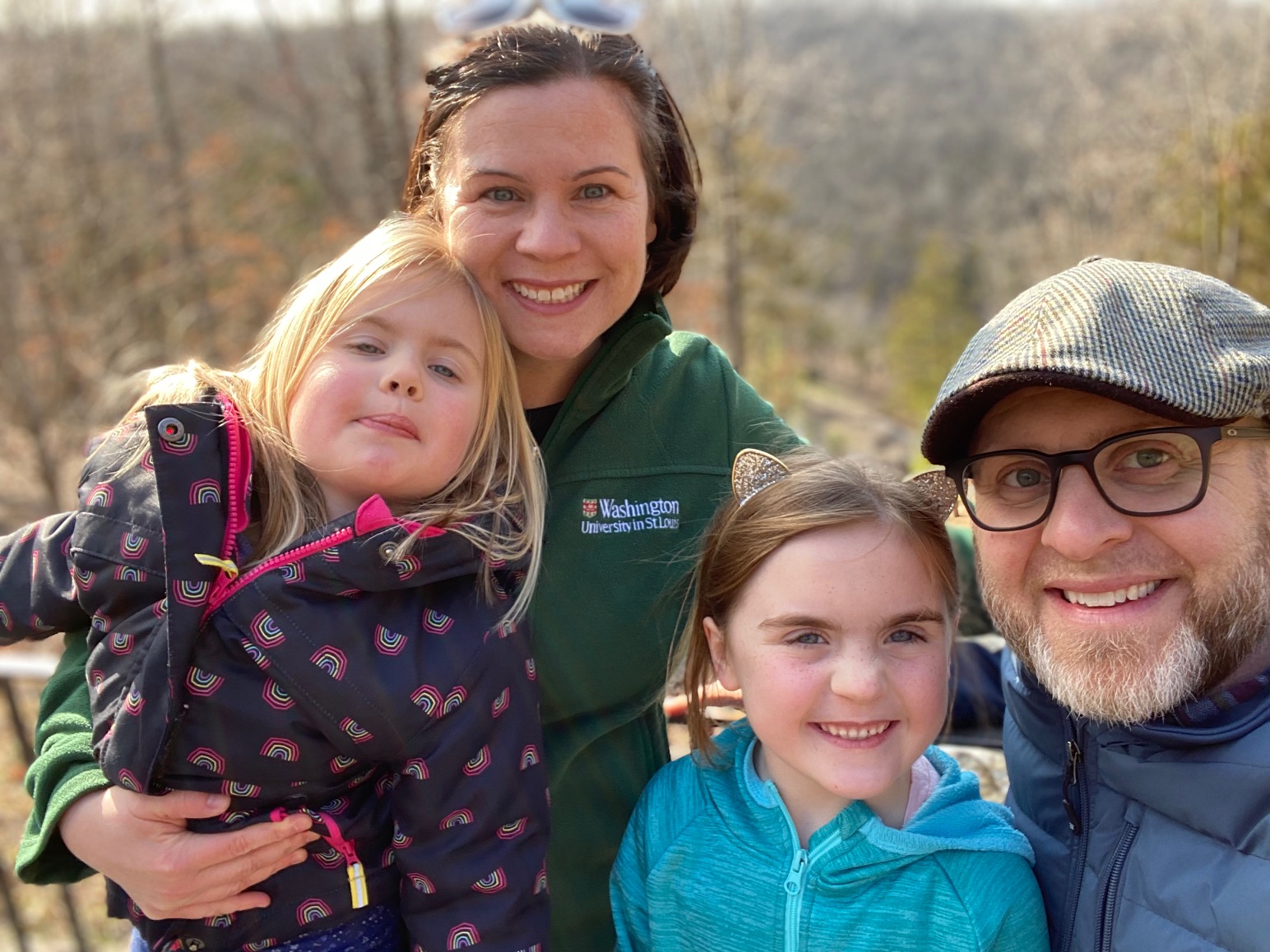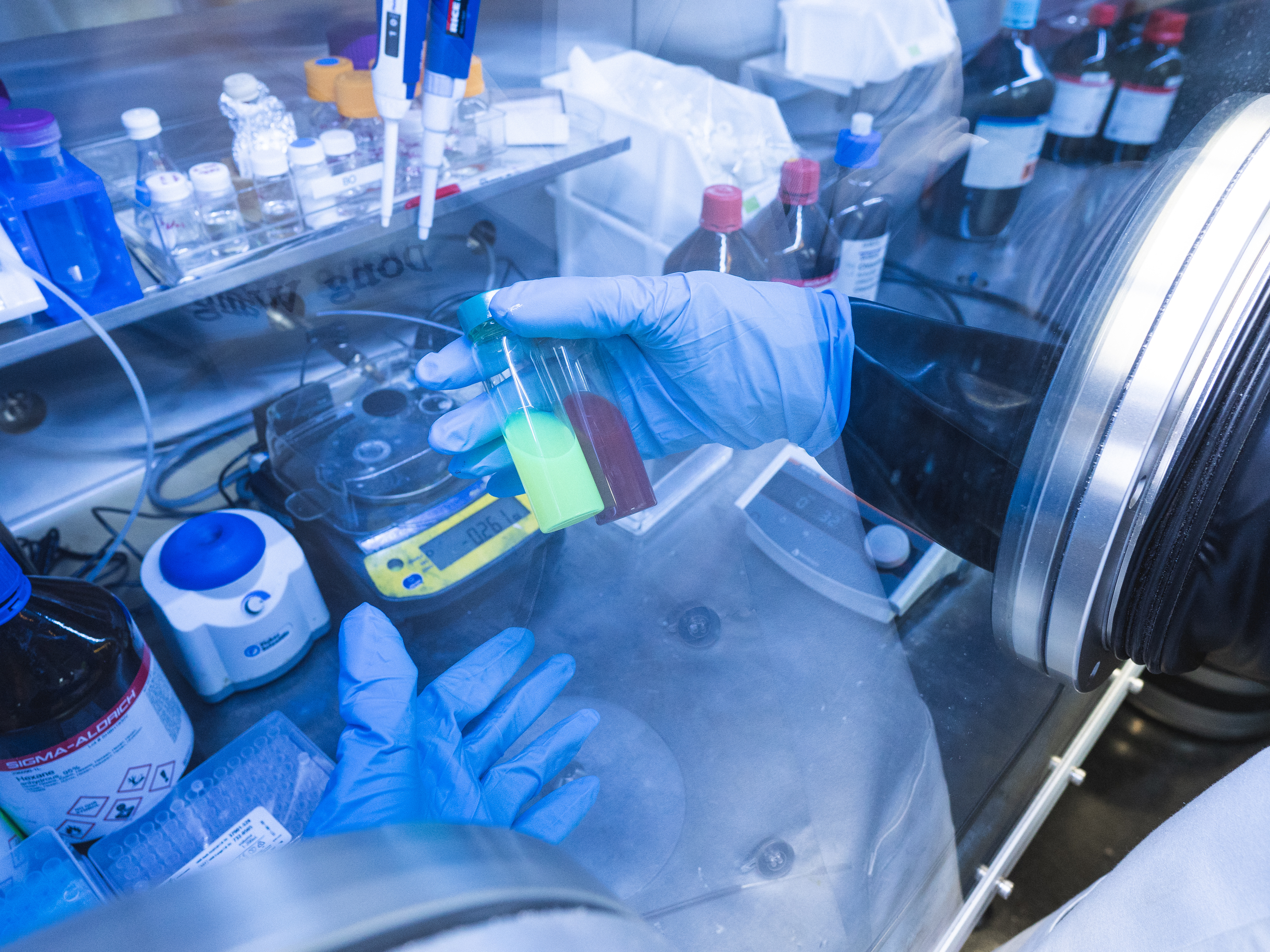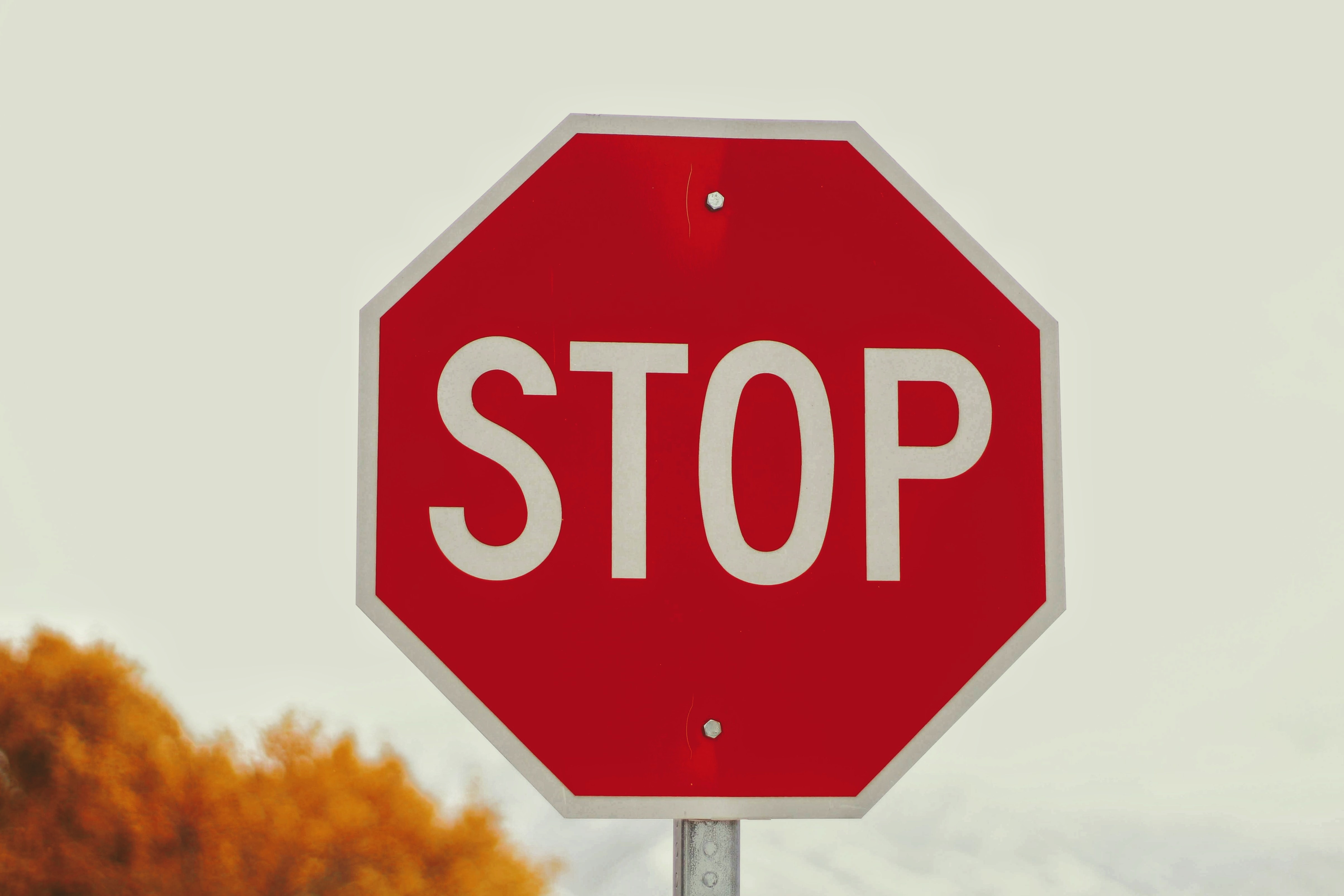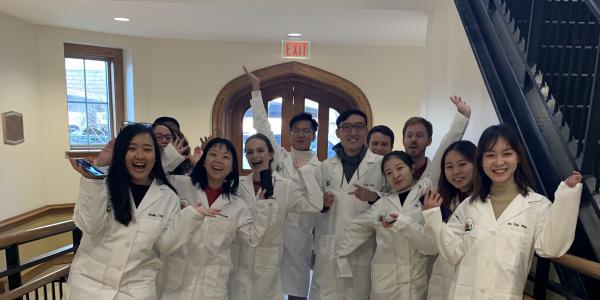In this Q&A, Angela Dartt describes her role in Environmental Health and Safety and offers advice on staying safe while conducting research during a pandemic.

As the director of the Office of Chemical Safety, Angela Dartt plays a critical role in lab safety across Washington University. She leads the team responsible for managing WashU's chemical hygiene plan and laboratory environmental health and safety handbook. Dartt and her team also provide researchers with training and guidance on health and safety requirements. Since coming to WashU in February 2018, Dartt has led the Chemical Safety Division within the office of Environmental Health and Safety (EH&S). Formerly the Division of Biological and Chemical Safety, splitting chemical safety into its own unit has allowed Dartt and her team to focus on chemical and lab safety on the Danforth and medical campuses and work on specific program improvements and resources for researchers.
Dartt holds a doctorate in environmental and occupational health from Colorado State University and is a Certified Industrial Hygienist (CIH). She brings 15 years of industry and consulting experience to the academic research environment. In addition to research health and safety, she provides industrial hygiene expertise in non-research areas and as part of the university's COVID response. In this Q&A, Dartt describes her role in partnering with Arts & Sciences and offers advice on staying safe while conducting research under COVID conditions.
What role does the Chemical Safety Division (CSD) play in Arts & Sciences?
Broadly speaking, our focus is on recognizing, evaluating, and controlling hazards as well as administering the laboratory EH&S handbook and chemical hygiene plan. My team – including four health and safety professionals and an environmental data management professional – provides support for research labs at WashU. We visit labs to perform inspections, check fume hoods, help new PIs when they arrive at the university, assist with lab construction and renovation, and manage and execute laboratory health and safety training. With that said, a large portion of our time is spent consulting with researchers, giving guidance, providing technical support, and answering questions.

For example, we might visit a lab to investigate a particular concern and offer solutions, or help develop written procedures. One common way to control chemical hazards is by working with facilities and departments to implement ventilation controls, such as fume hoods and exhaust devices, and ensure they are working properly. We also look at what personal protective equipment (PPE) is appropriate and assist labs with selecting PPE to protect against the hazards associated with their activities. It varies from lab to lab, but our goal is always to help researchers address these challenges to keep their labs running safely.
How does CSD connect with the Department of Chemistry specifically?
Right now, we have a couple of exciting partnerships with chemistry. We’re in the process of updating the university’s pyrophoric safety policy and guidance document. Our chemists are really the experts in this area, since many of them handle chemicals that might spontaneously ignite on a regular basis. It was time for this policy to undergo a detailed review, so it’s been important to engage all stakeholders and leverage faculty expertise to ensure this policy and guidance document addresses all identified health and safety precautions and is useful for the intended users.
EH&S staff are also heavily engaged in education and training in the chemistry department. We participate in the department's annual safety training and lecture in the introductory safety course that all first-year graduate students in chemistry take. Staff with varied expertise from Chemical Safety, Environmental Compliance, Occupational Safety, Biological Safety, and Radiation Safety provide a variety of lectures for the first-year graduate students. In addition, our Environmental Compliance Division has a strong partnership with chemistry and provides ongoing chemical waste guidance. These partnerships provide great ways to stay engaged with what’s happening in the department. Chemistry has a strong, long-standing emphasis on safety, including a student-led peer safety group, and I’ve been excited to continue growing that relationship. After training, I often get students reaching out to me directly for safety advice, which is exactly what we want to promote.
How have things changed with the pandemic?
Recently, we’ve seen an increase in minor incidents, like splashes. These seem tied to COVID in a couple of common ways. Some incidents result from people rushing to finish one shift before the next one comes in. Researchers are having to wrap up quickly to maintain lab schedules. We’re also seeing that when people have to wear face masks, they’re less diligent in always wearing safety glasses or goggles. Eye protection is incredibly important, but, when wearing a face mask, glasses or goggles can fog up, and people take them off.
We also have a lot more researchers working alone and taking on unusual shifts to meet physical distancing requirements. Working alone was certainly not uncommon in academia prior to the COVID pandemic; however, the pandemic has led to an increased need for isolation. Based on this, we have been working on developing guidance and tools to help manage working alone. One promising tool, aptly called "Work Alone," is included in the latest edition of the WashU Safe app. We’re currently testing that with help from several labs in chemistry.
What’s your favorite weird safety tip?
Let’s keep this in the theme of our current situation and some lessons learned recently. Peroxides don’t care about COVID nor your reduced time in the lab. Time-sensitive chemicals, like peroxide formers, develop additional hazards upon prolonged storage. Be sure to date peroxide-forming chemicals and monitor, test, and dispose per guidance on the EH&S website.
What is your key message for the A&S community? What should we be doing to keep ourselves and our community safe?

I'm really proud of how the A&S community, and the university, has navigated this difficult time. However, this does not change the fact that we are in a really challenging environment right now. Not only are people needing to be cognizant of everyday lab safety, but we also have the added stress from COVID. This adds an extra burden of worry and increases fatigue. So my best advice is to stop and take a moment. Think about what you are doing, assess your actions, and make sure you didn’t miss anything. When you’re looking at potential hazards, if at any time you get that feeling that something doesn’t seem right, just stop, reassess, and don't be afraid to ask for help.
Many of us are working non-normal schedules, often alone or with much fewer people around. This can result in new safety concerns that we did not have to consider previously. Because of all the extra things we have going on with COVID right now, stopping for regular risk assessment is more important than ever. It’s ok to give yourself a break, take extra time, and ask for help when you need it. We are here for support anytime. And remember: Wear a mask, keep your distance, avoid crowded indoor areas, and use good hygiene! It’s really important to remain vigilant and not let your guard down.
Contact Angela Dartt at the Chemical Safety Division with any matters related to environmental health and safety best practices. Follow her on Twitter at @ADarttIH.





